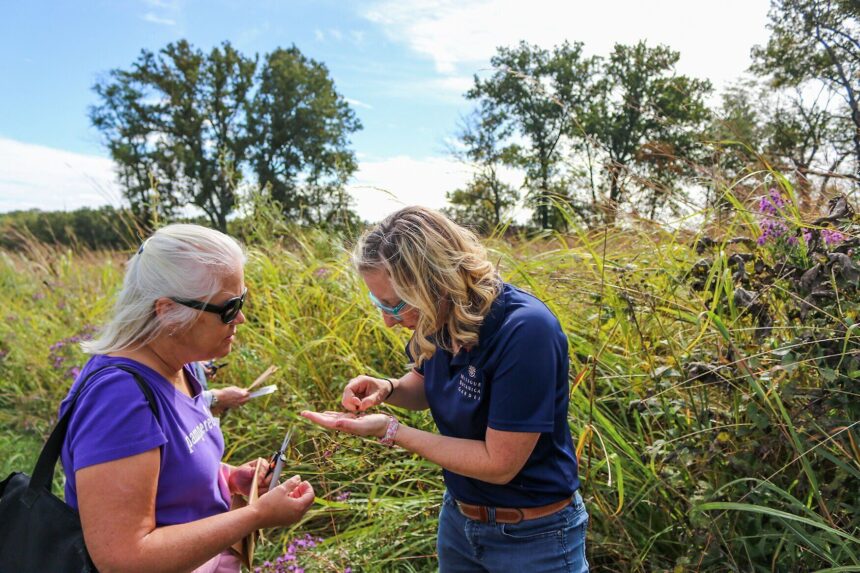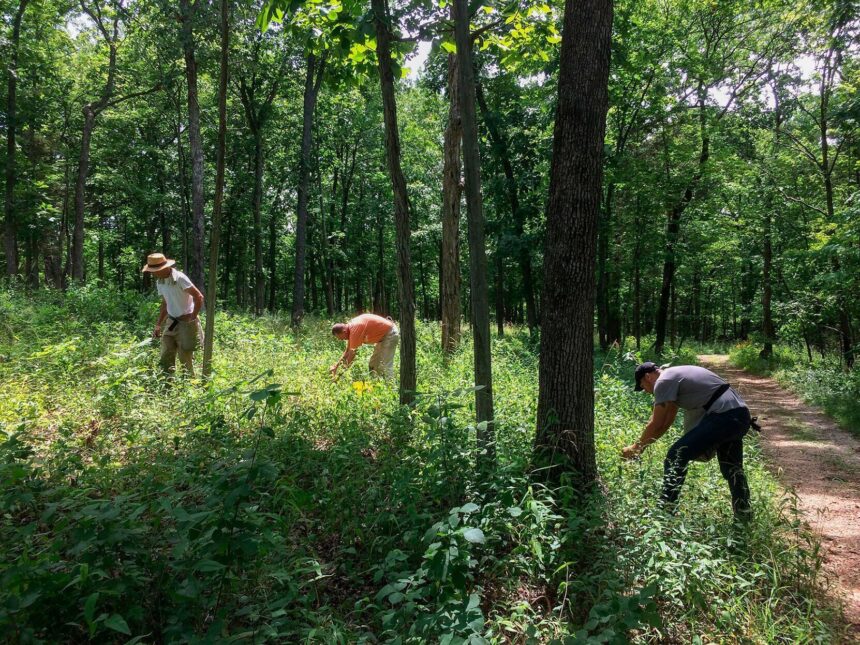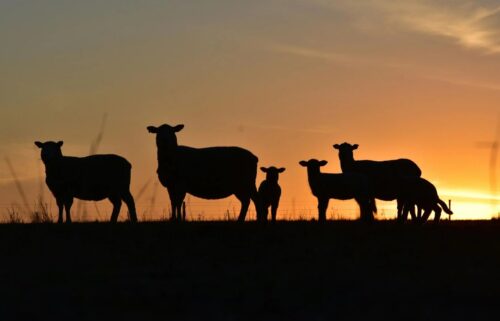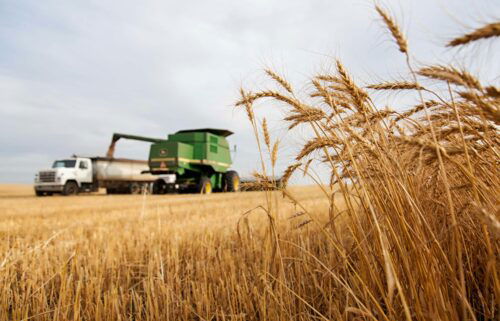Kernels of hope: Inside Missouri’s seed conservation efforts


By Columbia Missourian
via TN Content Exchange
The soil seed bank is a natural reserve of seeds in the soil. Plants drop seeds that lie dormant, sometimes for a thousand years, and wait for favorable conditions to germinate and grow into a new plant.
However, as the climate changes, this secret bank is no longer safe.
Rising temperatures in the soil layer, longer droughts and earlier frosts undermine the viability and longevity of seeds.
Taking inspiration from nature’s ancient survival strategy, conservation institutions have developed their own botanical “doomsday” vaults to protect genetic wealth.
When today’s landscape becomes uninhabitable, tomorrow’s seeds might find a way to thrive in new environments or even enable indoor cultivation, ensuring the survival of plant species.
The Missouri Botanical Garden established a seed bank in 2013 to preserve and store the seeds of Missouri’s native, rare and endangered plants. The seed bank currently houses more than 1,368 seed samples, including 208 rare and threatened ones. The bank represents 41% of Missouri’s native flora.
“By holding on to samples of seeds from various populations, we can hold large amounts of genetic diversity in a very small space, available to be used for decades into the future,” said Megan Engelhardt, director of Missouri Botanical Garden’s Seed Bank.
A race against time
According to the Missouri Climate Center, the state has seen a 0.9 degree Fahrenheit increase in average temperatures since the early 20th century, with more frequent extreme weather events like droughts and floods.
“Soil temperatures were closely following the air temperature trends,” explains Zack Leasor, Missouri state climatologist, “especially at seed planting depth.”
Heat is a silent killer in nature’s underground vault. When temperatures soar, proteins within the seeds begin to break down, destroying their viability.
Winter, once a reliable season of rest, is becoming a broken promise. Rising minimum temperatures during these crucial months disrupt an ancient awakening process.
“Here in Missouri, a lot of native species have seeds that will not germinate until they have received a certain length of cold, wet conditions,” Engelhardt said. “As winters get warmer and shorter, the right conditions may not exist to break dormancy.”
“With climate change rapidly exacerbating habitat degradation, the pressure to understand and conserve our natural environment is greater than ever,” Engelhardt added.
Having a local institution like the Missouri Botanical Garden’s Seed Bank will make it easier to collect and curate native plant populations. With year-round, on-the-ground work, botanists can closely monitor changes in these plant communities, interpreting nature’s responses to environmental changes like entries in a living journal.
Plant’s plan
Nature always plays it safe. Plants follow a “don’t put all your eggs in one basket” strategy. Only a fraction of the seed cache grows each year.
Marina LaForgia, an ecologist at California State University, Sacramento, who spent years studying how variability and global change shape plant communities, compared the seed bank with an investment.
“Like investing your money in the future,” she said. “The plants are spreading out their risk over multiple years.”
So, how long can seeds stay in the seed bank? Nobody knows.
“The oldest living seed that was ever found was buried in permafrost in Siberia and still successfully able to germinate,” LaForgia said. “It was 32,000 years old.”
“The time frame of seed survival is so far beyond our own life existence. It’s hard to say how long this seed could survive for,” she added.
When the environment changes, the seed bank helps buffer the plant community against those changes. If many plants die because of temporary harsh conditions, new plants can still grow from the seed bank, even after thousands of years.
Yet as extreme weather events hammer our planet, the soil seed banks are becoming increasingly vulnerable — nature’s once-secure safety deposit box is showing signs of failure. LaForgia is concerned that “the good year to germinate may never come.”
“With climate change, we don’t necessarily know how all of these species’ ranges are going to shift,” LaForgia said. “We need local efforts and collaboration across state lines to help ensure that we’re getting a good representation of genetic diversity.”
The past decade has witnessed an unprecedented surge in seed vault construction globally, with institutions recognizing the urgent need to preserve plant genetic resources. At the forefront of this movement is the Svalbard Global Seed Vault in Norway, which was recently awarded the 2024 World Food Prize.
More than just storage
The Missouri Botanical Garden’s Seed Bank is housed in a modest building of the Shaw Nature Reserve, on the outskirts of St. Louis.
Inside the bank, Katie Pittman carefully seals a small foil packet and places it in a sub-zero freezer. The packet contains seeds of a rare variety of orchids. This is one of thousands of plant species preserved at the seed bank. Collections come from Missouri, neighboring states and international locations.
“Each of these packets is a time capsule of genetic diversity,” said Pittman, one of two specialists at the facility.
Seed scientist Carol Baskin said a seed is essentially “a baby plant in a box with its lunch.” Each seed contains an embryo accompanied by its endosperm—a natural pantry that provides nourishment until the seedling can produce its first leaves. When environmental conditions whisper “it’s time,” the embryo wakes up and sprouts.
“Seed banking is like working in a hospital nursery for Mother Nature in a lot of ways,” Pittman said. “We do our best to protect these plant babies a little more extensively than they would exist naturally in the environment.”
The preservation process follows strict protocols. After collection, seeds undergo cleaning, drying and viability testing before storage. Traditional inspection methods include cut tests, where seeds are dissected to examine their internal tissues. However, for rare species with limited samples, the bank employs advanced X-ray technology to examine seeds non-invasively.
This non-invasive examination reveals whether the embryo is fully formed and if the endosperm — the seed’s packed lunch — is intact.
“Seeds are categorized as healthy, empty, insect-infested or underdeveloped,” Engelhardt said. “This (X-ray imagery) to examine seed quality has been a game changer in our ability to understand the quality of our collections.”
Engelhardt added that knowing exactly how many healthy seeds are collected is critical to making decisions about how to best “treat” them.
However, sometimes “sick” seeds can tell a promising story.
Looking at a black-and-white X-ray image, Pittman reveals what appears to be an imperfection in the acorns.
“Some seeds are not filled completely,” Pittman said as she traced the voids with her finger. “They indicate insect damage, which is typical in oak species.”
Oak acorns are important to feed native wildlife, so seeing insect damage is actually a sign that the forest’s food web is intact and thriving.
“We want the seeds to be a part of these natural food webs that are critical for healthy ecosystems,” Pittman explained. “We have to be thinking about these complex ecological systems, not just the seed health, to be good stewards of conservation.”
After the screening, each sample is carefully dried, sealed and stored at minus 4 degrees Fahrenheit (minus 20 degrees Celsius), conditions under which many seeds can remain viable for decades or even centuries.
Handpicking Hope
On a crisp autumn morning in the rolling hills in Franklin County, Mike Saxton kneels beside a patch of purple prairie clover. He crushes a bunch of tiny seeds in his hand and sniffs them. A rich, honeyed aroma tinged with loamy undertones wafted through the air. The seeds are now ready to collect.
“One of the main things we need to do is ensure that the seeds are ripe when we want to collect them,” Saxton said. “It is when they start to darken and harden.”
With a pair of scissors and a kitty litter bucket, Saxton strips the seed off the seed head, carefully placing it in the bucket, labeled with the date, location and species name.
Saxton is the head of the Missouri Botanical Garden ecological restoration team, which gathers and preserves the diverse plant life of Missouri, seed by seed, for future conservation and restoration efforts.
“Timing is everything,” Saxton said. “Collect too early, and the seeds won’t be viable. Too late, and they may have already dispersed or been eaten by wildlife.”
Collectors must also be careful not to over-harvest, ensuring enough seeds remain for natural regeneration and the food web. The general rule is to never take more than half of the seeds from a given plant population.
This work requires many, many hands. Fortunately, in addition to staff, Saxton engages a community of dedicated volunteers.
Mike Smith, 67, is a retired teacher from Franklin County, who’s traded his desk chairs for dirt-covered boots for more than seven years.
“A lot of people aren’t aware of the great biodiversity that we have here in Missouri,” Smith said. “Collecting seeds is a really good way to learn about native plants.”
“What’s most interesting is watching the transformation from an area that’s been completely taken over by invasive species ... to seeing the native diversity coming back again, so do the birds and insects,” he added.
This volunteer event serves as nature’s classroom, where every collected seed and restored acre tells a story of hope, teaching people that nature’s recovery isn’t just possible — it’s happening.
“Unless you’re going out to a natural area ... you don’t know about it, you don’t care about it,” Saxton said. “And if you don’t care about it, you don’t advocate for it.”
He pauses, looking out over the reserve. “We’re just a drop in the bucket,” he says, but then gently smiles. “Isn’t that how every prairie begins? With a single seed taking root?”



